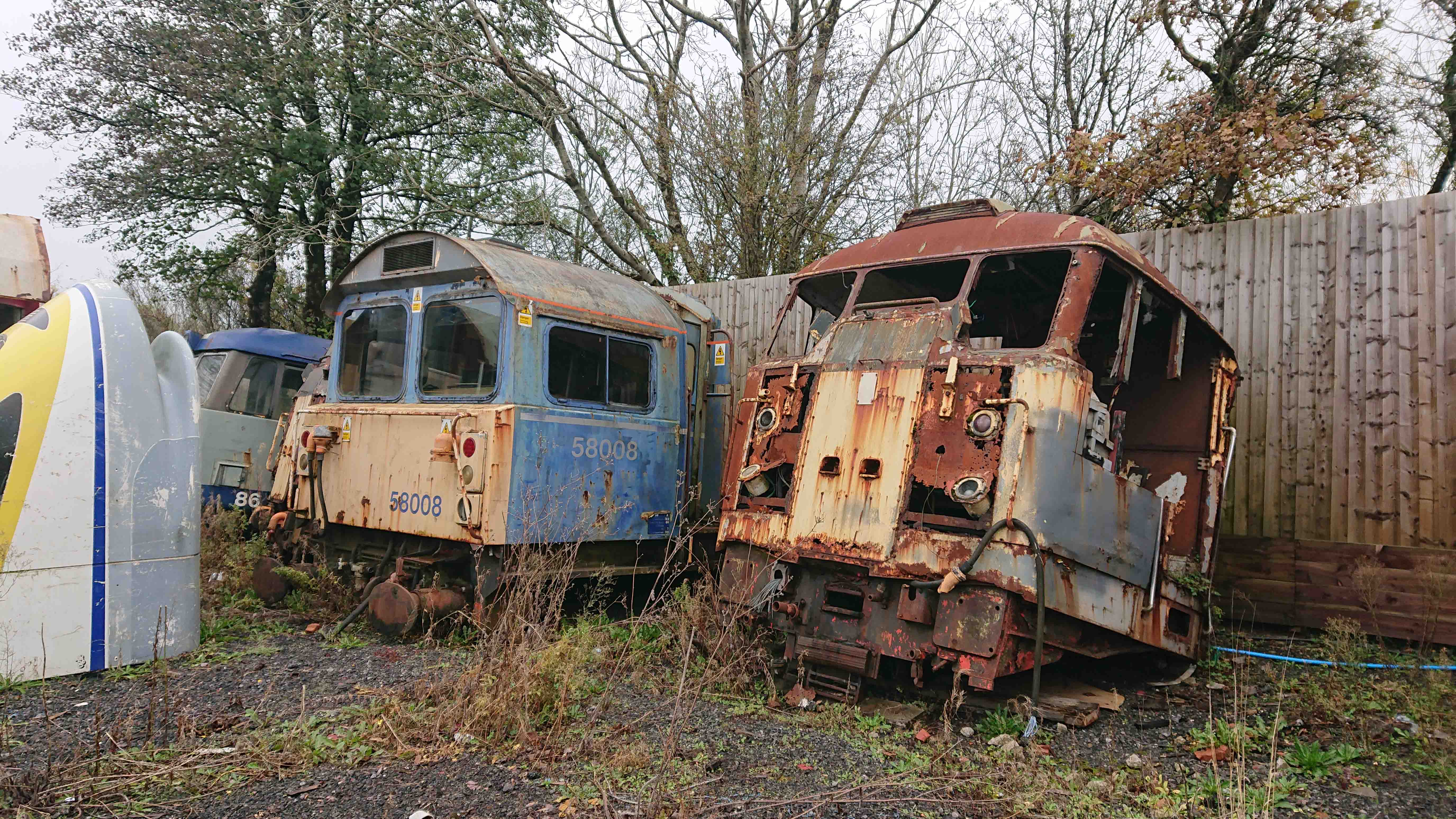WE ARE MANY.
WE ARE RAILFANS.

Railfan-Joe
December 2nd, 2021
Locomotive cabs are some of the most prized areas of railfanning, with access limited at best and often prohibited altogether outside of railway staff. But in south Wales, a small patch of hallowed ground lies where one avid railfan seeks to bring cab access to the likes of the public and railfans alike. Though not strictly open to the public, We Are Railfans were lucky enough to secure an appointment at: The Cab Yard.
The site's mastermind, Richard, is a wonderful chap. Though the appearance of 'beheaded' locomotives scattered around an industrial lot might seem slightly unnerving, his warm welcome and vast knowledge of rolling stock quickly puts visitors at ease. It's a curious sight - something between the post-apocalyptic remains of a bygone train yard and the nostalgic vibe of a contemporary railway museum. But first and foremost, this is a passion project and one Richard is keen to keep positive and productive.

It is worth enforcing the idea that all of the locomotives here were destined for scrap. There was no hope in saving them as full-bodied, workable units. By the time they'd come up on Richard's radar, through knowing other railfans, the industry and keeping tabs on loco withdrawals, these rusting hulks were in the hands of scrap merchants and in requesting, saving or purchasing the cab sections, he has kept something of the locomotives' legacies alive. It's a point Richard is keen to make as some consider his collection to be a hideous dismemberment of locomotives fit to run or be preserved as a whole... far from the reality of the situation.
The collection first started with a Class 45 back in the 1990s and over the years, the saving of these cab sections have proven useful for other groups restoring full locomotives elsewhere in the UK. Components from the cab were required by another group to restore a fully working Class 45 and there was difficulty sourcing or remaking them, so Richard was glad to help by donating dials and switches from his own 45 and ensuring another could run and be enjoyed in preservation. This kind of salvage share continues to be invaluable and even larger operating companies have managed to save working locomotives, in some case for use on the mainline, thanks to the original, genuine parts that have been saved from these salvaged cabs.

But beyond spares and salvage, is there any point to this collection? The answer is a firm: yes. Education and inspiration is crucial to the survival of railfanning, particularly today and with cab access so limited, it is rare for younger fans to get the opportunity to learn or admire the inner workings of these locomotives. Richard has worked with a number of groups in the past and continues to work with heritage rail projects in Wales and beyond, with the aim of making his cabs fully interactive and educational for railfans of all ages. His collection encompasses a variety of workings alone - from Class 47 and 45 diesels, to EMUs, London Underground cabs and a Driving Van Trailer (or DVT), British Rail's equivalent of a 'cab car'.



Beyond the locomotive cabs Richard also has a wealth of memorabilia, ranging from loco nameplates and numbers, to station signs, a complete 'Neptune' rail maintenance vehicle (one of only 3 remaining) and a full cockpit interior of a Boeing 727. There also remains a full body from a Network SE EMU, which will eventually be restored as a museum for another heritage railway.

Despite having this incredible collection of items, the Cab Yard is not permitted to open to the public and Richard is seeking new pastures to develop and open his collection. Some of his work can be found at the Llanelli and Mynydd Mawr Railway. But his passion and positivity as a railfan, with a niche interest and good heart, will hopefully see more and more railfans appreciating the confines of the cab for many years to come.
All photographs taken and published with permission of The Cab Yard. For more information see: http://thecabyard.co.uk/
 (From left to right): Inside the DVT cab; Class 55 'Deltic' no.55021 'Argyle & Sutherland Highlander'; another Class 31 cab; Class 508 and Class 506 EMUs.
(From left to right): Inside the DVT cab; Class 55 'Deltic' no.55021 'Argyle & Sutherland Highlander'; another Class 31 cab; Class 508 and Class 506 EMUs.



